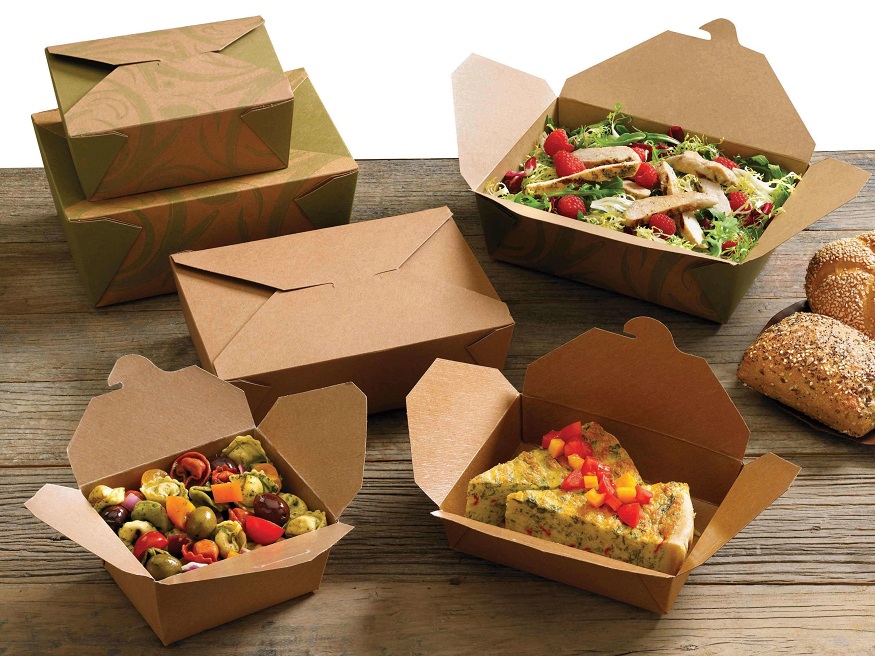In today’s fast-paced world, food packaging solutions are becoming increasingly important. Proper food packaging helps keep food fresh, safe and convenient for consumers. This article explores the benefits of food packaging solutions and takes a closer look at flexible packaging products.

One of the key benefits of the food packaging solution is that it helps keep food fresh and safe. Proper packaging can help prevent spoilage and contamination that can cause food poisoning.For example, vacuum packaging can help keep meat and poultry fresh, and tamper-evident packaging can help prevent food contamination.
Food packaging solutions can also help extend the shelf life of food products. This is especially important for perishable foods such as fruits, vegetables and dairy products. Proper packaging helps slow the growth of bacteria and other spoilage organisms, keeping food fresh longer.
Another benefit of the food packaging solution is that it makes food more convenient and easier to use. For example, single-use packaging can help reduce waste and make groceries more accessible to consumers. Additionally, packaging with resealable lids can help keep food fresh and convenient for consumers for a long time.
In particular, flexible packaging offers many advantages for food packaging solutions. Flexible packaging is a type of packaging that can be easily molded and shaped to fit the product it contains. This type of packaging is easy to transport and store because it is often made from lightweight materials such as plastic, paper, and foil.
One of the key benefits of flexible packaging is that it can be tailored to your needs. Flexible packaging can be designed to meet the specific needs of a food product, including the size, shape and materials used. This allows you to create functional and aesthetic packaging.
Flexible packaging is also durable and can provide excellent food protection. This type of packaging can be designed to be puncture, tear and moisture resistant, making it ideal for a variety of foods.
Flexible packaging is also designed to provide a barrier to oxygen and other gases, which helps maintain the freshness and quality of food.
Another advantage of flexible packaging is that it is lightweight and easy to transport. This reduces shipping costs and makes it easier to ship and distribute food around the world. Flexible packaging can also be designed to be easier to store and take up less space than traditional packaging.
Flexible packaging is highly sustainable and environmentally friendly.
Many flexible packaging products are made from recyclable materials, such as plastic and paper, which can be reused and repurposed. In addition, flexible packaging is often more efficient to produce than traditional packaging materials, requiring less energy and resources to manufacture.
Food packaging solutions have evolved significantly in recent years, driven by a growing demand for convenience, safety, and sustainability. Manufacturers are constantly exploring new materials, designs, and technologies to create packaging solutions that can meet the needs of today’s consumers. Some of the most innovative food packaging solutions available today include biodegradable packaging, active and intelligent packaging, and edible packaging.
Biodegradable packaging is a type of packaging that is designed to break down quickly and naturally, without causing harm to the environment. This type of packaging is typically made from renewable materials, such as plant-based plastics, and can be composted or recycled after use. Biodegradable packaging is becoming increasingly popular in the food industry, as it can help to reduce the environmental impact of food packaging waste.
Active and intelligent packaging is another innovative solution that is gaining popularity in the food industry. This type of packaging is designed to interact with the food product in some way, such as by providing a protective atmosphere or releasing antimicrobial agents. Intelligent packaging can also be designed to provide information about the food product, such as its freshness, quality, and nutritional content.
Edible packaging is a newer development in the food packaging industry, and involves creating packaging materials that are safe for consumption. This type of packaging can be made from a range of edible materials, such as seaweed, starches, and proteins, and can help to reduce the amount of packaging waste generated by the food industry. Edible packaging is still in the early stages of development, but has the potential to revolutionize the food packaging industry in the years to come.
In addition to these innovative solutions, there are many other types of food packaging products available today that offer a range of benefits for manufacturers, retailers, and consumers. For example, modified atmosphere packaging (MAP) is a type of packaging that helps maintain the freshness and quality of food by controlling the gas composition inside the packaging. This type of packaging is commonly used for fresh fruit and vegetables as well as meat and seafood.
Vacuum packaging is another popular food packaging type, especially for meat and poultry. This type of packaging includes a vacuum seal that helps keep food fresh and flavorful by removing air from the packaging. Vacuum packaging also helps extend the shelf life of food products, making it an ideal choice for manufacturers and retailers.
Flexible packaging products are another type of food packaging solution that has become increasingly popular in recent years. Flexible packaging products are made from materials such as plastic, paper, or aluminum foil, and can be molded into a range of shapes and sizes to suit different food products. This type of packaging is lightweight, durable, and can be easily transported and stored, making it an ideal choice for manufacturers and retailers.
Flexible packaging products also offer a range of benefits for consumers, such as ease of use and convenience. Many flexible packaging products feature resealable closures, which can help to keep food products fresh and prevent spillage. Flexible packaging products can also be designed with easy-tear openings, making them easier for consumers to open and use.
In conclusion, food packaging solutions offer a range of benefits, including keeping food products fresh and safe, extending their shelf life, and making them more convenient and easy to use. Flexible packaging products, in particular, offer a number of advantages, including customizability, durability, lightweight design, and sustainability. When choosing food packaging solutions, it is important to consider the specific needs of the food product and select a packaging material that can provide the necessary protection and functionality. Flexible packaging products are an excellent choice for many food products and can provide a cost-effective and eco-friendly solution for food packaging needs.











Leave a Reply
You must be logged in to post a comment.